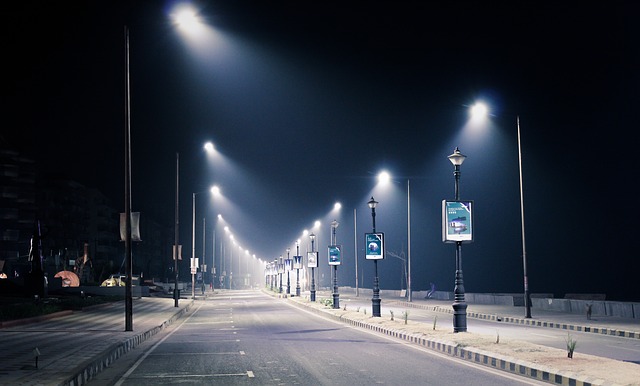High-intensity LED streetlights may be causing people to become sleepless in Seattle – and in other places such as Los Angeles, New York, Houston and other places, according to the American Medical Association.
The AMA warning, issued in June, stated that LED streetlights emit an invisible blue light that can disrupt normal sleep patterns and potentially increase the risk of serious health conditions, such as cardiovascular disease and cancer. The lights can also mar driving vision at night, it added.
There have been concerns raised over the years regarding LED lights, but the statement from the AMA adds weight to the issue as cities and town are now likely to reassess the kind of LED lights they install in public places, the Washington Post reports.
Close to 13% of roadway and area lighting is now LED, a report for the Department of Energy confirmed last year, but many locales still have to make the switch.
LED lights are up to 50% more energy-efficient than the high-pressure sodium lights generally used. LEDs last longer too – 15 to 20 years compared to two to five, and illuminate large swaths more evenly.
Some cities, however, are quick to point out that the health concerns are not substantial enough to outweigh the benefits of the first LED lights that were installed in the past three to eight years. New York, for example, has shrugged off the warning. But the city has changed high-intensity white LED lights in some residential areas, where there have been complaints, with lower-intensity bulbs that the AMA says are safe.
In Seattle, Seattle City Lights likewise dismissed the health concerns, pointing out that most computers and televisions emit more harmful blue wavelengths than LED lights.
Lake Worth in Florida, on the other hand, is going with 4,150 LED lights with an amber tint after a year and a half of trying out various lights, settling for a color and intensity they say is good for their city. In Phoenix, the city is going for brighter lights at major intersections and ballpark areas and softer lights in residential areas. The city also noted that the glow from televisions and computers in reference to health issues from LED lights.
The federal government encouraged the use of LEDs as soon as outdoor lighting was available, saying they were highly efficient for traffic lights and exit signs, even while critics say authorities put a rush on the endorsement.
Lighting is measured according to color temperature, expressed in Kelvins or “K.” The first-generation LED lights measured at least 4000K, which is what the AMA warned against. Now, there are plenty of LEDs with lower Kelvin ratings that have the same energy efficiency and don’t emit as much potentially dangerous blue light. These produce a softer, amber light compared to the harsh white of the first LED streetlights.
When LEDS were first installed, police and traffic-safety officials, as well as motorists like that they provided a sharp and wide area of illumination. But some residents complained that the lights were invasive and unflattering. Researchers had also raised concerns before the AMA did, citing the decrease in melatonin production due to exposure to the blue light from LEDs. Melatonin is secreted at night and helps regulate the body’s sleeping and waking rhythm.
The AMA mentioned melatonin in its warning, as well as reduced sleep time and poor sleep quality that lead to less productive daytime functioning. It cited studies on high-intensity lights that may heighten the risk for diseases and that LEDs have been linked to “discomfort and disability glare.” Lastly, the AMA said the lights might be harmful to birds and nocturnal animals.
While the AMA did commend the energy efficiency LED lights give, they encouraged cities to use LED lights no brighter than 3000K.
The American Association of State Highway and Transportation Officials is looking into the report, but a spokesman said there has not been much concern among members on the use of 4000K LEDs. The Department of Energy praised the performance of LED lights, but added that they should be used with “prudence” and that the AMA has added influence to the discussion.
Other experts are siding with the cities that are satisfied with their LED lights. The Lighting Research Center in New York says that the lights pose fewer risks than the AMA suggests and that the blue light “is probably not a concern to the majority of the population in most lighting applications.”
























